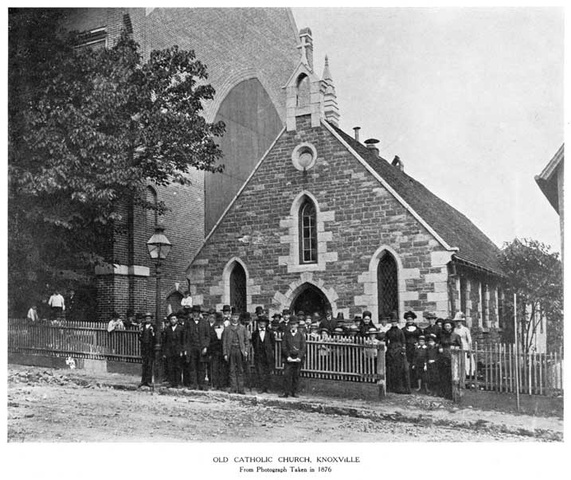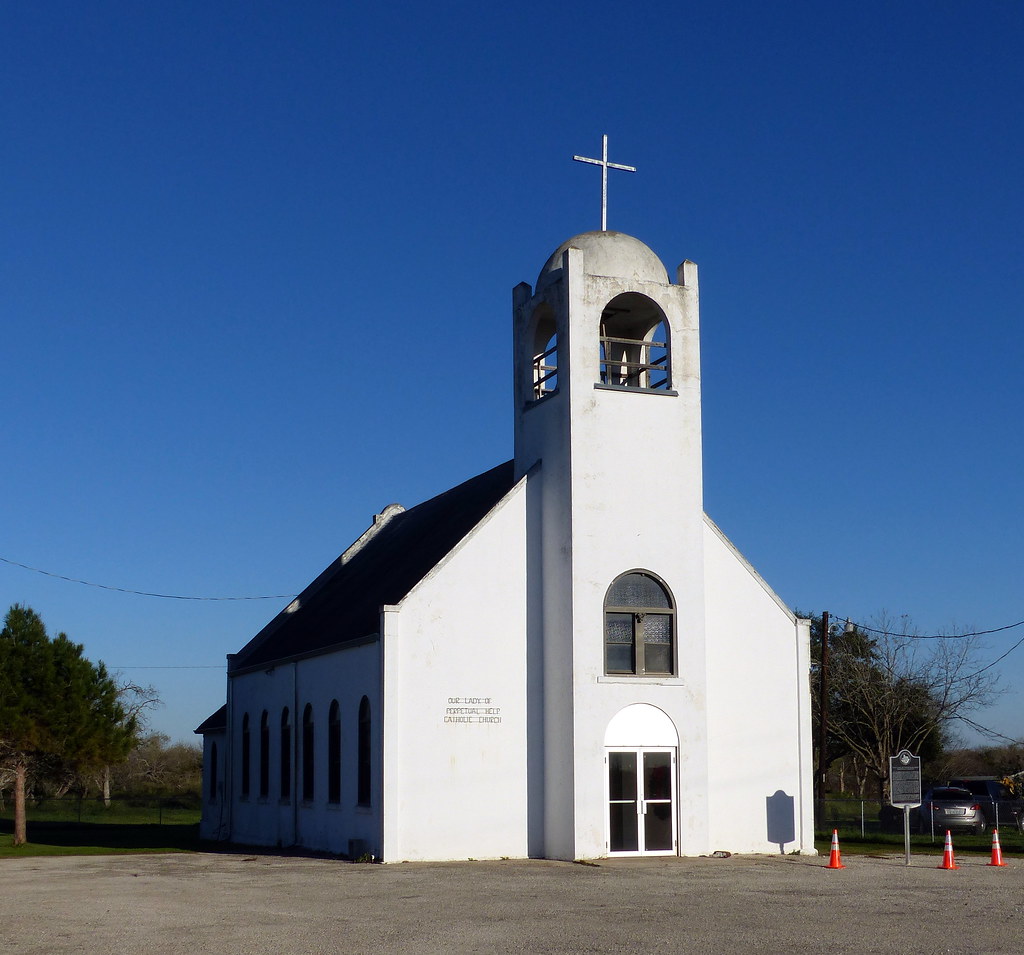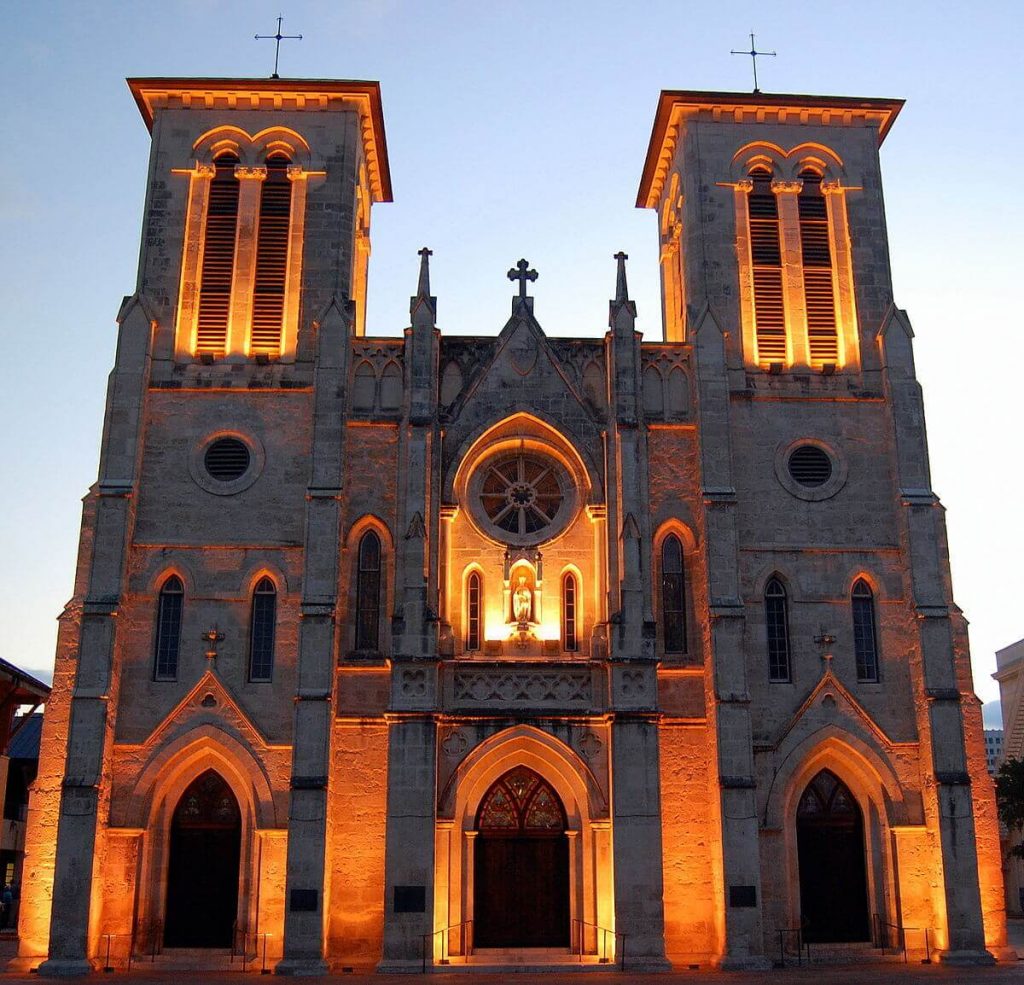Enlightenment And Modern Period
From the 17th century onward, the Enlightenment questioned the power and influence of the Catholic Church over Western society. In the 18th century, writers such as Voltaire and the Encyclopédistes wrote biting critiques of both religion and the Catholic Church. One target of their criticism was the 1685 revocation of the Edict of Nantes by King Louis XIV of France, which ended a century-long policy of religious toleration of Protestant Huguenots. As the papacy resisted pushes for Gallicanism, the French Revolution of 1789 shifted power to the state, caused the destruction of churches, the establishment of a Cult of Reason, and the martyrdom of nuns during the Reign of Terror. In 1798, Napoleon Bonaparte‘s General Louis-Alexandre Berthier invaded the Italian Peninsula, imprisoning Pope Pius VI, who died in captivity. Napoleon later re-established the Catholic Church in France through the Concordat of 1801. The end of the Napoleonic Wars brought Catholic revival and the return of the Papal States.
Catholic missionaries generally supported, and sought to facilitate, the European imperial powers’ conquest of Africa during the late nineteenth century. According to the historian of religion Adrian Hastings, Catholic missionaries were generally unwilling to defend African rights or encourage Africans to see themselves as equals to Europeans, in contrast to Protestant missionaries, who were more willing to oppose colonial injustices.
Soviet Annexation Of The Eastern Poland And Liquidation Of The Church
After World War I, Ukrainian Greek Catholics found themselves under the governance of the nations of Poland, Hungary, Romania and Czechoslovakia. Under the previous century of Austrian rule, the Ukrainian Greek Catholic Church attained such a strong Ukrainian national character that in interwar Poland, the Greek Catholics of Galicia were seen by the nationalist Polish and Catholic state as even less patriotic than the Orthodox Volhynians. Extending its Polonization policies to its Eastern Territories, the Polish authorities sought to weaken the UGCC. In 1924, following a visit with Ukrainian Catholic believers in North America and western Europe, the head of the UGCC was initially denied reentry to Lwów , only being allowed back after a considerable delay. Polish Catholic priests, led by their Latin bishops, began missionary work among Greek Catholics and administrative restrictions were placed on the Ukrainian Greek Catholic Church.
The church even grew during this time, and this was acknowledged by Soviet sources. The first secretary of the Lvov Komsomol, Oleksiy Babiychuk, claimed:
According to a 2015 survey, followers of the Ukrainian Greek Catholic Church make up 8.1% of the total population and form the majority in 3 oblasts:
Origins Of The Roman Catholic Church
Roman Catholicism itself maintains that the Roman Catholic Church was established by Christ when he gave direction to the Apostle Peter as the head of the church. This belief is based on Matthew 16:18, when Jesus Christ said to Peter:
“And I tell you that you are Peter, and on this rock I will build my church, and the gates of Hades will not overcome it.” .
According to The Moody Handbook of Theology, the official beginning of the Roman Catholic church occurred in 590 CE, with Pope Gregory I. This time marked the consolidated of lands controlled by authority of the pope, and thus the church’s power, into what would later be known as “the Papal States.”
Also Check: What Is The Inductive Bible Study Approach
Why Is Orthodox Easter Different
Because Eastern Christianity traditionally adheres to the Julian calendar, it observes Easter on a different day than Western Christianity does. This is in place of the Gregorian calendar, which is used by the majority of countries in the modern day and which, for instance, Great Britain switched to in 1752, which is a significant amount of time ago.
What Is The Difference Between Catholic And Roman Catholic

Roman Catholic and Catholic are synonymous terms. Some people, including some Protestants, take issue with the fact that the term Catholic is typically understood to refer to Roman Catholicism. Members of any of the 24 component Churches, including the one Western Church and the 23 Eastern Churches, are typically referred to as Catholic.
Recommended Reading: Where Is The Story Of Gideon In The Bible
Continue The Catholic Tradition Of Charity By Partnering With Catholic World Mission
Jesus gave the ultimate example of humility and servanthood. The apostles spread the message. Since then, the Catholic Church has grown into a major societal force, helping people experience spiritual and even physical freedom. Now you can share in this rich history by partnering with us in helping people in need around the world.
We are independent of the Catholic Church, but we adhere to its teachings and believe it can change lives for the better. When we partner with an area in need, we do more than hand out meals we come alongside the community, partnering with them so their hard work can lead to true, long-term self sufficiency. As Pope Francis said, Charity that leaves the poor person as he is, is not sufficient. True mercydemands that the poor find the way to be poor no longer.
This is our goal at Catholic World Mission, and we invite you to join us. Contact us today for more information about how you can get involved, and consider donating to our cause.
Who Split The Catholic Church
The rupture that King Henry VIII made with the Catholic Church is one of the events in English history that had the most far-reaching effects.During the time of the Reformation, the King of England took over the role of Head of the Church in England, replacing the Pope in that role.This resulted in a severe schism between Catholics and Protestants.But why did Henry go through with such a dramatic breakup?
Read Also: What Is The Best Version Of The Bible
Important Events In The Catholic Church
While some internal decisions and councils set forth Catholic teachings and principles that would last for generations, many external events contributed to the Catholic Churchs gradual changing. Here are some events that helped shape Catholicism into a dominant world religion and spiritual authority:
Basil Kovpak And The Society Of St Josaphat
According to Vlad Naumescu, during the early 1990s, priests of the Society of Saint Pius X began visiting Western Ukraine and made contact with, “a group of Greek Catholic priests and lay members that favored liturgical latinization and helped them organize into an active society.”
In 1999, Basil Kovpak and two other traditionalist UGCC priests asked Society of Saint Pius X Superior General BishopBernard Fellay to become their spiritual leader. The reasons for this move were that the three priests hoped to obtain both approval and support from fellow Traditionalist Catholics in the West. In September 2000, Bishop Fellay agreed and the Priestly Society of St. Josaphat was founded.
The Priestly Society of Saint Josaphat extends the SSPX’s criticism of indifferentism and Modernism in the Catholic Church to the Ukrainian Greek Catholic Church. They oppose certain decisions of the Second Vatican Council and aspects of ecumenism and interreligiousdialogue practiced by the Ukrainian Greek Catholic Hierarchy and the Holy See.
Unlike the Ukrainian orthodox Greek Catholic Church, Kovpak and the PSSJK reject both Sedevacantism and Conclavism.
Read Also: Hope Community Church King Of Prussia
Church In North America
In what is now the Western United States, the Catholic Church expanded its missionary activity but, until the 19th century, had to work in conjunction with the Spanish crown and military., the Franciscan priest in charge of this effort, founded a series of missions and presidios in California which became important economic, political, and religious institutions. These missions brought grain, cattle and a new political and religious order to the Indian tribes of California. Coastal and overland routes were established from Mexico City and mission outposts in Texas and New Mexico that resulted 13 major California missions by 1781. European visitors brought new diseases that killed off a third of the native population. Mexico shut down the missions in the 1820s and sold off the lands. Only in the 19th century, after the breakdown of most Spanish and Portuguese colonies, was the Vatican able to take charge of Catholic missionary activities through its Propaganda Fide organization.
The History Of The First Church
The first Christian church started in Jerusalem out of the Jewish tradition as Jesus and his disciples were all Jews. So, the first Christians did not meet in separate churches but in the local Jewish synagogues. Hence, the earliest church was led by apostles Peter and John. However, St Paul was one of the main leaders to set up Christian churches throughout the Roman empire, as well as, Europe and Africa.
During the Roman Empire, everyone was required to show loyalty by standing before the statue of the Roman Emperor, putting a pinch of incense on the altar fire and saying, Caesar is Lord. However, the only people who didnt have to do so were Jews. As the Romans thought that Jews and Christians are the same, many non-Jews became Christians. Consequently, they started being punished for their beliefs. The persecution and the massacre of the Christians under Roman rule stopped when the emperor Constantine became a Christian.
Recommended Reading: What The Quran Says About The Bible
The Acts Of The Apostles
This moment was the catalyst that would lead to a drastic change in society and the history of world religions. Jesus disciples were downtrodden after his departure. No more could they rely on Jesus to perform miracles and preach sermons. Jesus left the task of spreading his teachings around the world to his disciples, and they had their work cut out for them. The book of Acts picks up at this moment. After some deliberation, the disciples put their newfound calling into motion.
These early acts of the apostles which is where the book of Acts gets its name are what shaped the early Christian church, giving some glimpses at what it would become hundreds and even thousands of years from then. One can see that many branches of Christianity exist today. The book of Acts details how the teachings of Christianity can change lives, but it also shows that the rapid spreading of teachings could lead to different interpretations and practices. This would lead to the official establishment of Roman Catholicism.
Did Jesus Start The Catholic Church

Origins. Tradition of the Catholic Church states that Jesus Christ established the church that would later bear his name. The New Testament is a chronicle of the actions and teachings of Jesus, as well as his selection of the twelve apostles and his instructions to them to carry on his ministry after his death and resurrection.
Also Check: What Does It Say In The Bible About Tattoos
The Emergence Of Catholic Christianity
At least in an inchoate form, all the elements of catholicitydoctrine, authority, universalityare evident in the New Testament. The Acts of the Apostles begins with a depiction of the demoralized band of the disciples of Jesus in Jerusalem, but by the end of its account of the first decades, the Christian community has developed some nascentcriteria for determining the difference between authentic and inauthentic teaching and behaviour. It has also moved beyond the geographic borders of Judaism, as the dramatic sentence of the closing chapter announces: And thus we came to Rome . The later epistles of the New Testament admonish their readers to guard what has been entrusted to you and to contend for the faith that was once for all handed down to the holy ones , and they speak about the Christian community itself in exalted and even cosmic terms as the church, which is body, the fullness of the one who fills all things in every way . It is clear even from the New Testament that these catholic features were proclaimed in response to internal challenges as well as external ones indeed, scholars have concluded that the early church was far more pluralistic from the very beginning than the somewhat idealized portrayal in the New Testament might suggest.
Dioceses Parishes Organisations And Institutes
Individual countries, regions, or major cities are served by particular churches known as dioceses in the Latin Church, or eparchies in the Eastern Catholic Churches, each overseen by a bishop. As of 2008, the Catholic Church has 2,795 dioceses. The bishops in a particular country are members of a national or regional episcopal conference.
Dioceses are divided into parishes, each with one or more priests, deacons, or lay ecclesial ministers. Parishes are responsible for the day to day celebration of the sacraments and pastoral care of the laity. As of 2016, there are 221,700 parishes worldwide.
In the Latin Church, Catholic men may serve as deacons or priests by receiving sacramental ordination. Men and women may serve as extraordinary ministers of Holy Communion, as readers ” rel=”nofollow”> lectors), or as altar servers. Historically, boys and men have only been permitted to serve as altar servers however, since the 1990s, girls and women have also been permitted.
Ordained Catholics, as well as members of the laity, may enter into consecrated life either on an individual basis, as a hermit or consecrated virgin, or by joining an institute of consecrated life in which to take vows confirming their desire to follow the three evangelical counsels of chastity, poverty and obedience. Examples of institutes of consecrated life are the Benedictines, the Carmelites, the Dominicans, the Franciscans, the Missionaries of Charity, the Legionaries of Christ and the Sisters of Mercy.
Recommended Reading: What Does The Bible Say About Foul Language
When Did The Catholic Church Start
Early Christianity continued to grow its roots throughout the world as the church fathers shared their teachings far and wide. But at this point in history, Catholicism had yet to separate itself from other forms of Christianity. Two truths needed to occur to mark the start of Roman Catholicism. These events are the following:
Well take a closer look at these two events and how together they signal the founding of the Roman Catholic Church.
Who Started The Catholic Church
Tradition of the Catholic Church states that Jesus Christ established the church that would later bear his name. The New Testament is a chronicle of the actions and teachings of Jesus, as well as his selection of the twelve apostles and his instructions to them to carry on his ministry after his death and resurrection.
You May Like: How Much Does Moody Bible Institute Cost
The Roman Catholic Church Contends That Its Origin Is The Death Resurrection
and ascension of Jesus Christ in approximately 30 A.D. The Catholic Church proclaims itself to be the Church that Jesus Christ died for, the Church that was established and built by the Apostles. Is that really the true origin of the Catholic Church? On the contrary. One who simply READS the New Testament will notice that the Catholic Church has not got its origins in the teachings of Jesus, or that of his Apostles.
In the New Testament, there is no mention of the papacy, worship/adoration of Mary, or the immaculate conception of Mary, the perpetual virginity of Mary, the assumption of Mary, or Mary as co-redemptrix and mediatrix petitioning man-proclaimed saints for their prayers, Apostolic succession, the ordinances of the Catholic church functioning as sacraments, infant Baptism, confession of sin to a man-made priest, purgatory, indulgences, or the equal authority of church tradition to The Scriptures.
Timeline Of The Catholic Church
The Catholic Church is an influential pillar of todays global society. People around the world share the same Catholic faith despite borders and cultures. Many people in America have seen Catholic Churches in their towns or have participated in Catholic events. For generations, attending mass and sharing in the sacraments has been a cornerstone of public and family life.
Knowing the timeline of the Catholic Churchs history can help you have a deeper, richer understanding of your faith. Despite the passing generations and the comings and goings of great leaders and nations, the Catholic Church continues to be a beacon of light to a world in need.
You May Like: What Does The Bible Say About Conviction
Who Founded Roman Catholicism
As a branch of Christianity, Roman Catholicism can be traced to the life and teachings of Jesus Christ in Roman-occupied Jewish Palestine about 30 CE. According to Roman Catholic teaching, each of the sacraments was instituted by Christ himself. Roman Catholicism also holds that Jesus established his disciple St. Peter as the first pope of the nascent church . Centuries of tradition, theological debates, and the wiles of history have shaped Roman Catholicism into what it is today.
Who Do Catholics Worship

Like other Christians, Catholics believe Jesus is a divine person, the Son of God. They believe that because of his love for all people, he died so that all people will live forever in heaven. The Catholic Church also recognizes the Trinity that the Father, the Son and the Holy Spirit are together the only God.
Don’t Miss: Define Exhortation In The Bible